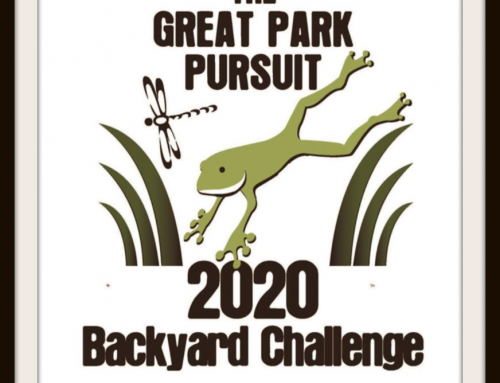As you maybe guessed from my title yesterday, a guest blogger is being featured on “Odyssey Through Nebraska” today. This post is by my dear friend, Lynnette, a fellow homeschool mom. Our kids are very close in age and get along very well. Almost too well as they have gotten into some mischief on occasion … 🙂 I know you will enjoy reading her recap of one of my favorite Nebraska places.
As a transplant to Nebraska, I get to learn about the state right along with my kids. I learned about Ash Fall Fossil Beds a number of years ago- perhaps at Morrill Hall, and my mother-in-law was very excited about doing this trip with us. (She was a high school science teacher before kids, then a preschool teacher for a number of years. The perfect traveling companion for a trip like this with five kids!) We had been waiting for the kids to be old enough to learn something, as well as for me not to be pregnant or nursing. 🙂 The time had finally come!
Ash Fall Fossil Beds is open from May 1 – October 12 for the 2014 season. Depending on when exactly, the hours are slightly different. We went in October of 2013, and spent a few hours there. It was plenty of time to see and do almost everything. There is an entrance fee, and you also need a valid park permit for your vehicle. If you have a Morrill Hall membership, you can add a “Friends of AshFall” for $10. (A huge benefit of this membership is the passport program which gets you into other science museums around the country for free or reduced costs)
From Lincoln, it is about a three hour drive. An adventurous and ambitious family could make this a day trip. A long day, but doable. We decided to make it a longer adventure, and rented a cabin at Niobrara State Park, so traveled another hour further north. (This is another trip worth doing on it’s own! Beautiful!)
After a long car ride and a beautiful evening at the park, we woke to cold, dreary, gray skies. We found out one reason why this site is closed in winter- no heat in most of the buildings! So bring a sweater if you plan to visit early or late in the season. This site is literally in the middle of fields, so plan your day accordingly by bringing a lunch or eating a big breakfast. It will be a bit of a drive to get to the nearest fast food.
We started our trip by checking in at the Visitor Orientation Center. Here we got a map and an overview of the grounds. There’s a gift shop and a couple of displays. One wall is glassed off and gives you a peek into a lab. During the summer you may be able to observe scientists at work!
We enjoyed the displays of fossils, shark teeth, and bones found in the area. But we spent most of our time at the interactive station where the children could examine samples for themselves.
From there we headed outside. On our short walk to the education building, we stopped by two more displays. The first had fossil samples on tables outside of the Visitor Center, the second was a place to stop and dig for bones.
The building we were headed to (that I can’t remember the name of) is an education building that provides many interactive opportunities for children. We were the only kids there (the benefit of homeschool means we can take a trip like this during a weekday in October). Displays included bones from several animals’ legs, a 3d camel, fossil vs petrified wood, puzzles for preschoolers, and the ever-popular digging experience. Later I learned that these (and the ones you can uncover at Morrill Hall) were made from casts of skeletons found here!
After examining every display, we made our way to the Hubbard Rhino Barn. Lots of education happened here! There are numerous posters and displays and even volunteers on hand. The main fossil bed is protected within the barn, but on the walk there, we passed several exposed and labeled fossils. Within the building, you can look down from above, you can see the areas that have already been excavated, you can see the exploratory trenches that determined the size of the fossil field, and you can view exposed fossils. That volunteer was great at pointing out things of interest for both adults and kids! She helped to make sense of what we were seeing. During the summer, when scientists are working in the field, there are cameras and video screens that give you a closeup view of what they are working on (the downside of being here during a non-peek time means no scientists). The students who come here for internships get the lovely job of sifting the sand looking for smaller fragments. One of the biggest lessons my kids learned is that being a paleontologist is tedious and time consuming. They’ve been excavating this site for decades!
Even a trip to the bathroom is an educational experience! The sidewalks were lined with Nebraska rock samples.
If it had not been so cold and rainy, we would have taken a walk on the beautiful one mile trail. Perhaps we would have eaten our lunch at the picnic tables. Although our family could easily have enjoyed a couple more hours here, we did not feel we missed out on anything since we did get to spend 3-4 hours exploring.















Wonderful! Would love to make it out there someday. Looks well worth the trip!